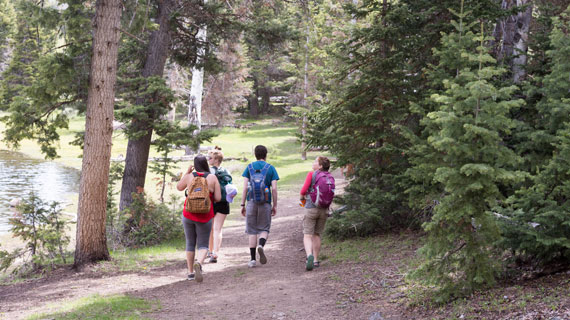Physical Education and Human Performance Name Change
Published: August 21, 2017 | Author: Abigail Wyatt | Read Time: 1 minute
 The Physical Education and Human Performance Department at Southern Utah University recently underwent a name change. In order to better reflect the areas of study, the department will now be known as Kinesiology and Outdoor Recreation (KOR).
The Physical Education and Human Performance Department at Southern Utah University recently underwent a name change. In order to better reflect the areas of study, the department will now be known as Kinesiology and Outdoor Recreation (KOR).
The change addressed the concern of undergraduate and graduate students who felt like physical education and human performance didn’t accurately represent their major. By adopting a more contemporary name, the department is broadening its appeal to students who are interested in scholarly and professional careers in kinesiology and outdoor recreation.
“We changed our department name to better represent our students,” said KOR Department Chair Camille Thomas. “I want people to know that we are still offering the same services and classes as before, but now with more clarity and focus.”
Kinesiology is the study of human movement, which is an umbrella term that includes many sub-disciplines. Physical education is just one of those sub-disciplines which typically only includes individuals in school PE programs. Outdoor recreation is specially included in the new title because of SUU’s commitment to get people outside living healthy lifestyles.
“Two years ago we won the Outdoor Nation Campus Challenge and became known as the University of the Parks,” said Thomas. “It’s great to have a department name that reflects SUU’s efforts to get students outside.”
Kinesiology and Outdoor Recreation truly embraces all the majors offered including exercise science, physical education teaching/coaching, athletic training, outdoor recreation parks and tourism, and the masters of science in sports conditioning and performance. These changes result in a broader description and understanding of all the courses offered in the department.
To learn more about KOR visit www.suu.edu/ed/pe.Contact Information:
435-586-5400
Contact the Office of Marketing Communication
This article was published more than 3 years ago and might contain outdated information or broken links. As a result, its accuracy cannot be guaranteed.

